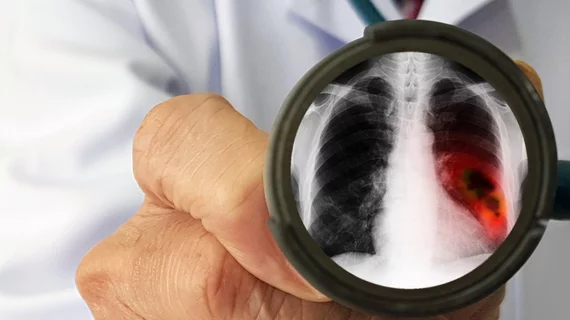How one hospital bolstered incidental lung nodule follow-ups with enhanced reporting, patient tracking
One Denver hospital paired revamped CT reporting with a digital patient-tracking registry to help close the care loop and improve follow-up imaging for incidental lung nodules, according to a case study published Wednesday.
Cardiothoracic specialists at the National Jewish Health Center unveiled their system of structured phrases to help radiologists characterize nodules and recommend additional imaging based on Fleischner Society guidelines, Feb. 17 in JACR. And when combined with their computer registry to prompt patients and providers for next steps, timely follow-up increased from 46% to 55%.
This particular facility treats more high-risk lung cancer patients so results may not be generalizable to other organizations, the researchers explained. But the team believes it will have an outsized impact on their patient population and, perhaps, other specialty hospitals.
“The results of our experience are encouraging,” Debra S. Dyer, MD, with National Jewish Health’s radiology department, and colleagues added. “The tracker phrases are easily embedded into the radiologists’ workflow, and the CT reports provide clear guidance to the referring provider. The tagged cases are automatically loaded into a registry able to generate reminders and to identify cases needing immediate management.”
Dyer and colleagues went live with their system in August 2011, testing follow-up rates on CT reports performed before (September 2008 to March 2011) and after implementation (August 2011 to December 2016). In total, 410 patients were involved in the pre-tracker group compared to 626 in the post-intervention cohort.
Looking over the results, Dyer et al. found CT reports contained time-specific nodule follow-up guidance 94% of the time, compared to the 30% with vague or missing guidance before the 2011 launch. And timely follow-up cases jumped from 46% to 55% after the system was implemented.
Furthermore, high-risk lung cancer patients over 65 years old were 41% more likely to undergo follow-up compared to rates before the study.
To date, the researchers say radiology compliance numbers have been “excellent,” and tracker phrases can be updated as lung nodule guidelines evolve.
“In conclusion, we found that a radiologist-initiated system to identify and track patients with incidental lung nodules was associated with improved timeliness of follow-up, reduced failure to follow-up, and was reliably used by radiologists across time,” the authors wrote.

